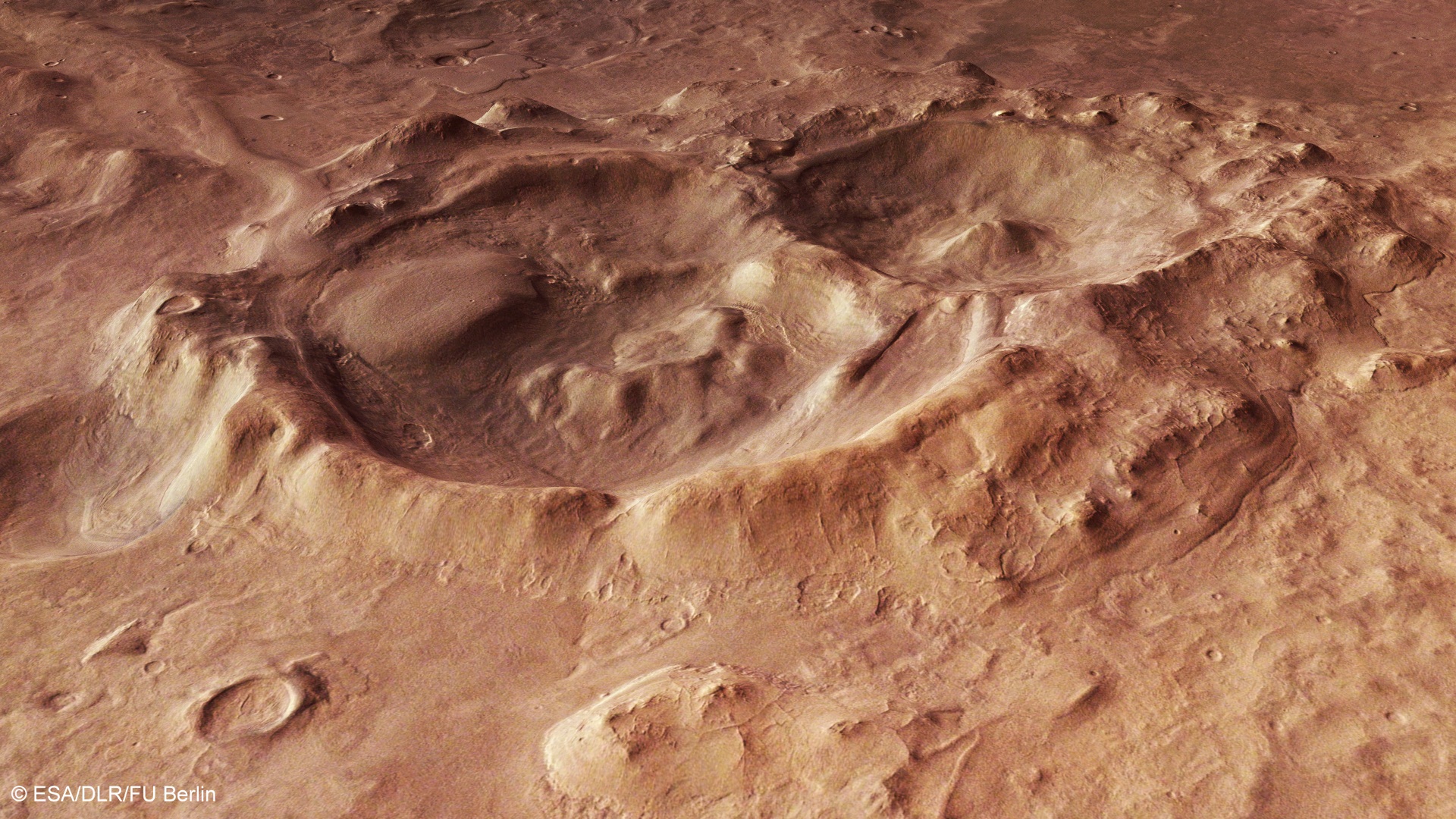A study recently published in the journal Icarus revealed a depression in a Mars crater on the edge of a place called Hellas basin, where conditions could be favorable for liquid water and chemical nutrients. The researchers suggest this is a good place to look for signs of past life on the Red Planet.
Their analysis revealed that the hole, which has the shape of a funnel, could have been formed tens of millions of year ago by volcanic activity underneath an ancient glacier. Lead author Joseph Levy, a research associate at the University of Texas Institute for Geophysics, told Fox News that the possibility of a meltwater lake formed in the Hellas implicates the existence of multiple elements required in a habitable environment, including water, energy, chemical nutrients and warm temperatures organisms need to survive and reproduce.

Researchers first detected the site in 2009 by collecting images captured by the Mars Reconnaissance Orbiter. They compared the crack-like features with ice cauldrons found in Iceland and Greenland. Earthly features like these are formed when volcanoes erupt under an ice sheet, and Levy said his research team wanted to study the location because they thought it could host key elements that preserve life.
The team used stereoscopic images and digital elevation models to analyze the 3D shape and structure of the crack-like features. The scientists found a second depression in the Galaxias Fossae region, which has features that resemble those in the Hellas. Both of them are funnel shaped. While the depression at Galaxias Fossae is likely to have been originated from an impact, the one at Hellas appears to have been formed from volcanic melting of ice.
“These landforms caught our eye because they’re weird looking,” Levy said, as quoted by the Daily Mail. “They’re concentrically fractured so they look like a bull’s-eye. That can be a very diagnostic pattern you see in Earth materials.”
Exploring the funnel-shaped depression will not be an easy task
Levy explained the sites were so interesting because they were deep holes in Mars ground and that it was essential to look in the nooks and crannies and flip over the rocks where signs of past Martian life is most likely to be found. Mars 2020, the next NASA rover scheduled to be sent to the Red Planet, will focus on looking for evidence of life while the European Space Agency’s ExoMars mission will use an orbiter to search for methane and other gasses.
Levy pointed out that no vehicle will be able to explore the depressions at Hellas and Galaxias Fossae anytime soon because of their extreme conditions. Hellas is just over about 1,378 feet deep.
Source: Fox News
